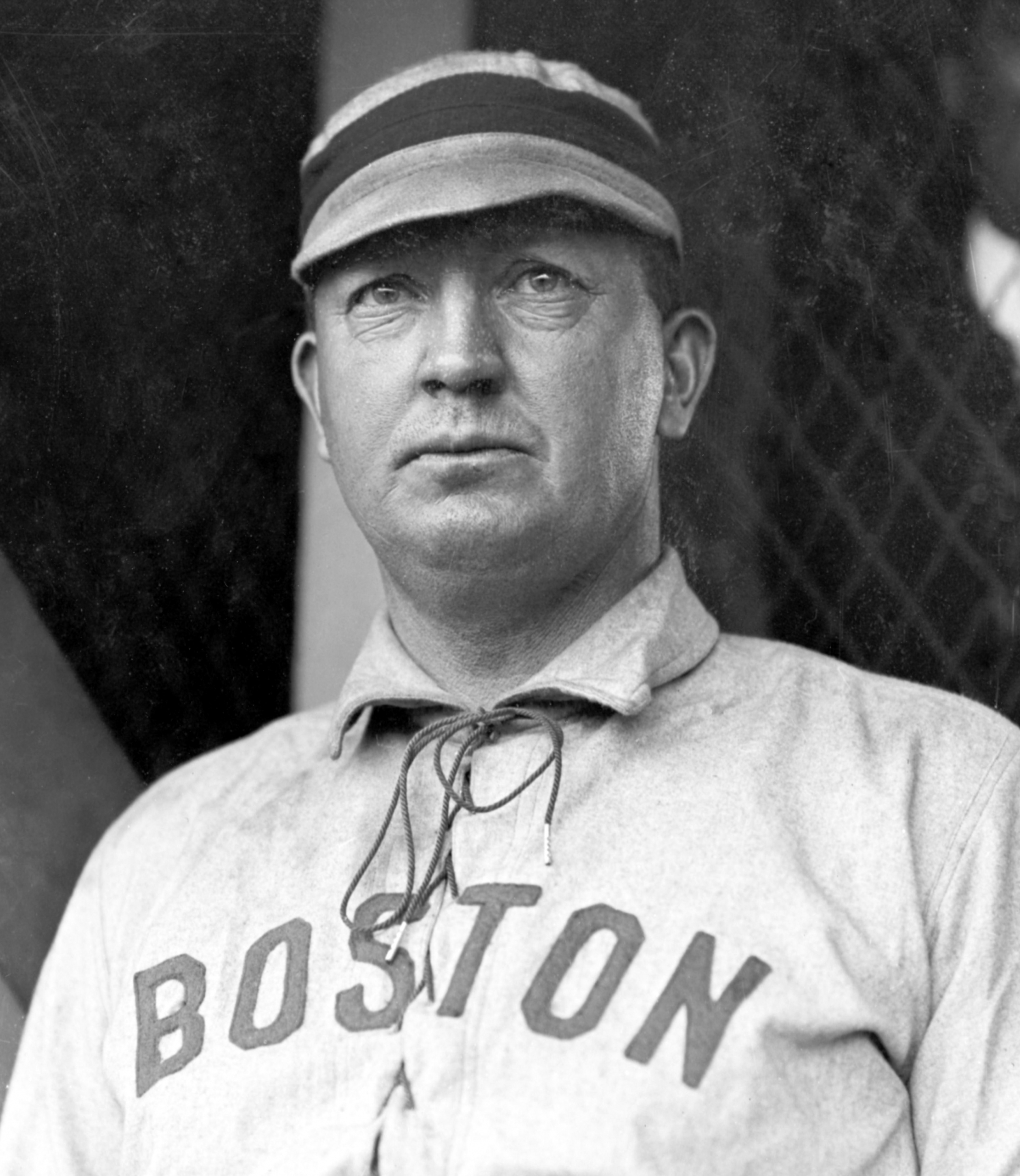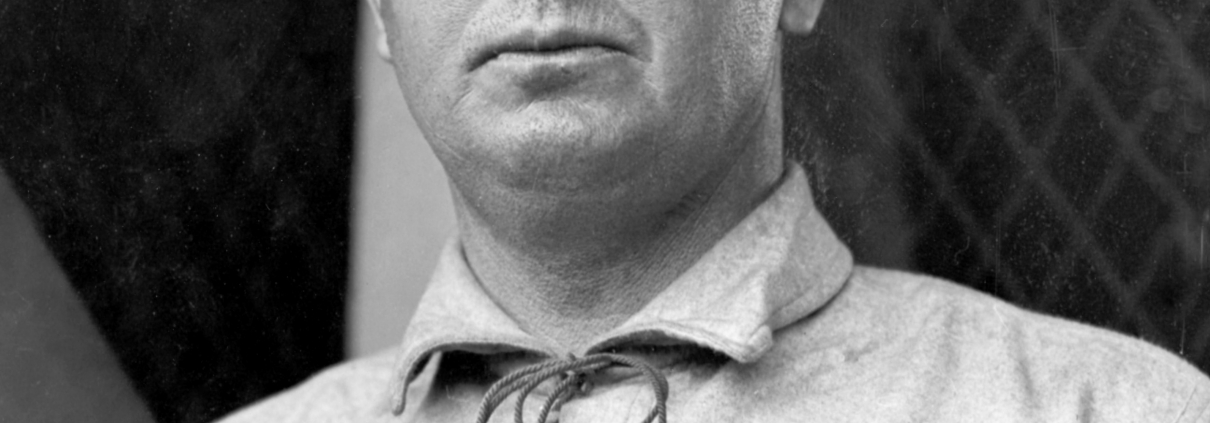April 14, 1908: Boston wins first game as the Red Sox after formal name change
 The Boston Red Sox played their first game under that name on April 14, 1908, at the Huntington Avenue Grounds in Boston. After the franchise was launched in 1901, they had gone through seven seasons without a formal name, but they were often known as the Boston Americans, since they played in the American League and shared the city with the National League’s Boston club.1
The Boston Red Sox played their first game under that name on April 14, 1908, at the Huntington Avenue Grounds in Boston. After the franchise was launched in 1901, they had gone through seven seasons without a formal name, but they were often known as the Boston Americans, since they played in the American League and shared the city with the National League’s Boston club.1
An offseason 1907-08 uniform change by Boston’s NL club – then called the Boston Doves – prompted the rebranding. “On December 18, 1907, shortly after Boston’s National League team revealed that the new uniforms for 1908 eliminated their customary red stockings, owner John I. Taylor of the Boston Americans pounced. He quickly decided that his team would adopt red hose and call themselves the Boston Red Sox. Taylor personally oversaw the uniform design, selecting red stockings because Boston’s first professional baseball team – the Red Stockings – had worn them. Taylor appreciated the link with tradition. It was predicted that the name ‘Red Sox’ would prove a popular choice.”2
As the Americans, the club had already experienced some highs and some lows. They had won the first World Series ever played, beating the Pittsburgh Pirates in 1903. They won the AL pennant again in 1904, edging out the New York Highlanders (later, the Yankees) by 1½ games. John McGraw of the National League’s pennant-winning New York Giants, however, declined to play the Americans in a World Series. The low point came in 1906, when they lost 105 games and won only 49 (there was one tie game).3
Longtime major-league catcher Deacon McGuire was the Red Sox manager as 1908 began, having taken the reins in 1907 for the final 112 games of that year’s losing season (under McGuire, the 1907 team was 45-61-6.)4
In spring training, the Red Sox, based in Little Rock, Arkansas, had compiled an impressive 17-2 record, and there was some optimism that they might better their seventh-place finish from 1907. A military brass band was ready to play for two hours before the 3:00 P.M. opener and a number of city and state dignitaries had been invited; the Doves were scheduled to play their opener in Brooklyn.5
The Boston Herald noted that the first five batters in the Red Sox lineup were “new men, unless [third baseman] Harry Lord in his short experience with the team last fall should be excepted.”6
With weather described as “most comfortable for player and spectator,”7 the game drew a large crowd of 18,752, “exceeding in number any previous opening at the local park.”8
Boston Mayor George A. Hibbard, Acting Governor of Massachusetts Eben S. Draper (who threw out the ceremonial first pitch to umpire Jack Sheridan), and dozens of other political dignitaries and religious leaders were listed in the various Boston newspapers.
The Red Sox – and mascot Jerry McCarthy – wore white uniforms with red stockings and the image of a red sock on the front of the blouse.9
Boston’s starting pitcher was the venerable Cy Young, starting his 19th season of major-league ball. He had turned 41 years old on March 27. He had been with Boston’s AL club since its inception and averaged 31 wins per year in the team’s first three seasons.10 It was his 15th consecutive Opening Day start.
Young went through the first four innings without allowing a Washington batter to reach base. In the top of the first, it was a foul fly ball to left, a 4-3 groundout, and a foul fly caught by catcher Lou Criger.
Manager Joe Cantillon designated Washington’s starter as Charlie Smith, a right-hander who turned 28 years old just six days later. He’d been 2-1 with Cleveland in 1901, then 9-16 (2.91) and 10-20 (2.61) for Washington in 1906 and 1907, years in which the Nationals had finished 37½ and 43½ games out of first place.
The Red Sox scored once in the bottom of the first inning. Left fielder John Thoney – appearing in the majors for the first time in nearly four years, after spending the previous three seasons in the minor leagues – led off and was walked. Before Smith had thrown his first pitch to Lord, Thoney had stolen second, despite Smith’s having thrown a pickoff to first baseman Jerry Freeman. Freeman’s throw to second was high and into left field, and Thoney was safe. Lord sacrificed, putting Thoney on third base. He scored on a wild pitch that eluded catcher Gabby Street and struck the umpire.11 “Thus the first run of the year was made without a hit.”12
Young struck out five straight Nationals in the second and third innings. The final out of the Washington third was on Smith’s foul fly, which first baseman Bob Unglaub ran back and caught near the right-field bleachers.
Young then helped himself in the bottom of the third. He recorded the team’s first hit of the season when he, as the Washington Herald reported, “dumped one of his annual Texas leaguers behind first base.”13 Young reached second when Thoney hit the ball back to Smith, whose throw to second went wide and was muffed by shortstop George McBride, perhaps hastening to attempt a double play. There were two runners on and nobody out. Lord fouled out to Street, but Smith then walked center fielder Jim McHale – and then walked right fielder Doc Gessler, forcing in Young for Boston’s second run. Smith escaped further damage.
The only runner to reach base for either team in the fourth was Red Sox shortstop Heinie Wagner, who singled.
In the fifth, Washington right fielder Otis Clymer grounded to second baseman Frank LaPorte, who fielded it with his bare hand and threw to first for an out. Young struck out Freeman, but then Street doubled to the bleachers in left-center, giving the Nationals their first baserunner. McBride grounded out, 6-3. The Red Sox went down in order in their half.
Washington threatened in the sixth. Third baseman Bill Shipke led off with a single to right field, and Smith sacrificed him to second. Pickering walked. Left fielder Bob Ganley grounded out, 6-3, and Young fielded a roller and threw out second baseman Jim Delahanty.
In the bottom of the inning, the Red Sox made it 3-0 when Gessler singled, was sacrificed to second by second baseman LaPorte, and scored on a double by Unglaub. It was their only earned run.
Neither team scored in the seventh. Neither team had a man reach base in the eighth.
Ganley singled to lead off the top of the ninth but was thrown out trying to stretch it to a double.14 Jim Delahanty got Washington on the scoreboard with a home run over the fence in left field. It was only the fourth time any player had hit a ball over the left-field fence.15 Clymer flied out to left. Young struck out Freeman, ending the game.
Young was 1-0 in the new season, as were the Red Sox. He had struck out nine and allowed just four well-scattered hits – “never in better form,” according to the Washington Herald.16
In 1908 Young posted the best earned-run average of his career – 1.26 – and was a 20-game winner, finishing 21-11 in 33 starts. He won all six of his decisions against the Nationals, including a one-hit shutout on May 30. On June 30 against the Highlanders, he pitched the third no-hitter of his career. Young was traded to Cleveland in February 1909 and spent 2½ seasons there before returning to Boston – this time with the NL club – to wrap up his career in 1911. His 192 wins for the Americans and Red Sox remain the most by any pitcher in franchise history.17
Charlie Smith went 9-13 (2.41 ERA) in 1908.18 In September 1909, he was traded to the Red Sox for Doc Gessler and was 28-22 through the 1911 season.
Delahanty’s homer was one of only eight hit by the Nationals in 1908.19 Washington finished in seventh place, but 17 games ahead of the Highlanders in the league standings, then landed in the cellar in 1909. They didn’t have a winning record again until 1912.
Red Sox owner Taylor hired Fred Lake to replace Deacon McGuire as manager with 40 games left in the 1908 season. The team finished its first year as the Boston Red Sox with a record of 75-79, in fifth place in the eight-team American League. It had a 22-17-1 record in 1908 under Lake, who helped the team to a winning record and a third-place finish in 1909 (88-63-1). In the 10 years that followed 1908, the Red Sox won four more World Series.
Acknowledgments
This article was fact-checked by Kevin Larkin and copy-edited by Len Levin.
Photo credit: Cy Young, Chicago History Museum.
Sources
In addition to the sources cited in the Notes, the author consulted Baseball-Reference.com and Retrosheet.org.
https://www.baseball-reference.com/boxes/BOS/BOS190804140.shtml
https://www.retrosheet.org/boxesetc/1908/B04140BOS1908.htm
Notes
1 For the years 1907-1910, Boston’s National League team was known as the Doves, after co-owners George and John Dovey.
2 Bill Nowlin, Red Sox Threads (Burlington, Massachusetts: Rounder Books, 2008), 1. The actual stockings were apparently first worn in Little Rock, Arkansas, during spring training on March 21, 1908. Tim Murnane wrote in the Boston Globe story datelined March 21 at Little Rock: “The new uniforms of gray and bright red stockings were very attractive this afternoon.” T.H. Murnane, “Both Are Rather Weak in Hitting,” Boston Globe, March 22, 1908: 12.
3 The 105-loss total was matched in 1925 and topped only twice – 107 losses in 1926 and 111 losses in 1932.
4 As one might surmise, the six ties are a franchise high, though it was matched in 1914. The only time after 1961 that the Red Sox recorded a tie was in 1985.
5 The Doves did play the Brooklyn Superbas, and won 9-3, then lost their next four games. Their home opener, at the South End Grounds, was on April 22, a 7-1 loss to the Phillies.
6 “Old Grad,” “Sports at Random,” Boston Herald, April 14, 1908: 11. All three outfielders (Thoney, McHale, and Gessler) were new to the team, as well as the second baseman (Frank LaPorte). Third baseman Lord had appeared in 10 games for the Boston Americans in 1907.
7 Thomas Kirby, “Baseball Lid Off; Season Under Way,” Washington Herald, April 15, 1908: 1.
8 “Hub Nines Begin Baseball Year with Wins,” Boston Herald, April 15, 1908: 1.
9 McCarthy was depicted in a photograph on the front page of the April 15 Boston Journal.
10 Young had a rough 1906, going 13-21 with that year’s team, and a high (for him) ERA of 3.19. but rebounded to 21-15 (1.99) in 1907.
11 Sheridan was the lone umpire for the game, customary at the time. He had begun umpiring in 1890 and was highly regarded at the time, and even attracted “a grand ovation when he came onto the grounds,” according to Thomas Kirby. More than one newspaper declared it a passed ball.
12 Arthur McPherson, “Red Sox Defeat Senators Before Crowd of 19,000,” Boston Journal, April 15, 1908: 8.
13 Kirby.
14 Cantillon was ejected for arguing the call too vociferously.
15 The Boston Globe’s Tim Murnane reported that Charlie Hickman, Patsy Dougherty, and Freddy Parent were the three others “who can claim the honor of driving the ball over this fence.” Delahanty’s hit “sounded like an earthquake under a tenement house and the next instant all eyes were turned to the west as it shot clear of the west fence for a home run, one of the finest drives ever witnessed at the grounds. … Delahanty’s hit was the cleanest of the four and will go down in history as one of the finest drives ever made in baseball.” T. H. Murnane, “Open with a Victory,” Boston Globe, April 15, 1908: 1, 4. The fence was 376 feet from the plate. Philip J. Lowry, Green Cathedrals (Phoenix: SABR, 2019), 45. The Boston Journal said that the spectators accorded the homer “a great cheer.” McPherson. The Boston newspapers all dubbed the visitors the Senators, while the Washington papers called them the Nationals. They did not officially become the Senators until 1957.
16 Kirby.
17 Young’s final record for Boston was 192-112 (2.00 ERA), despite the team itself having losing records in each of his final three seasons. Roger Clemens is tied with Young with 192 wins. Not far behind them both is Tim Wakefield with 186.
18 Leading the Nationals in wins was Tom Hughes, who had been 20-7 for the pennant-winning 1903 Boston Americans. He was 18-15 (2.21 ERA). Second in wins was a 20-year-old Walter Johnson (14-14, 1.65), later to retire with 417 career wins and be honored as a charter member of the National Baseball Hall of Fame.
19 The 1908 Red Sox hit 14 homers as a team. The only player for either team to hit more than two was Gessler, who hit three for the Red Sox.
Additional Stats
Boston Red Sox 3
Washington Nationals 1
Huntington Avenue Grounds
Boston, MA
Box Score + PBP:
Corrections? Additions?
If you can help us improve this game story, contact us.


